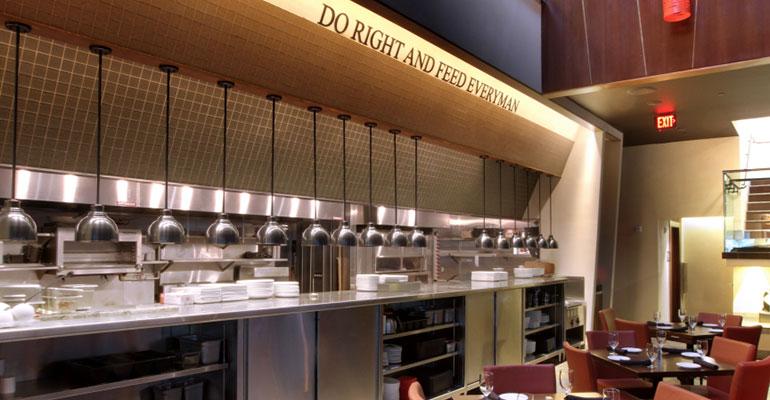So you need to overhaul your restaurant kitchen. Here’s an ideal scenario: the restaurant operator works on the design project hand-in-hand with the chef who will ultimately be using the kitchen. Together, the chef and operator develop a versatile kitchen that can accommodate where the menu is — and where it will be going.
But conditions are never ideal, are they? Sometimes chefs leave before the project is completed. Sometimes the restaurant owner doesn’t want the chef’s input. Sometimes new chefs come in mid-project and criticize equipment choices.
When tackling a large kitchen project, it’s important to build defensively to accommodate the widest range of chef and menu scenarios. Here are some strategies to set up your kitchen build for success:
Cover your bases with versatile equipment
Restaurants can make sure choices fit a broad menu and fit core-cooking requirements by following tried-and-true equipment lineups. A cooking lineup with a fryer, griddle and broiler (on a refrigerated base), 4- or 6-burner range with oven, and a combi oven or convection oven on the end can accommodate a wide menu.
Steer clear of built-in equipment that locks the installation into a specific make and model. Changes after-the-fact will likely not fit. Avoid custom stainless fabrication when standard catalog products (buyouts) will get the job done.
Since 460 Volt equipment is usually special order and difficult to return or exchange, stick with 120 or 208/220 Volt services for equipment where possible.
Position the equipment for flexibility
Placement can be key. Unless there are multiple fry stations, fryers should be located close to the cold or appetizer station since many of the fried items are also used in that area. If the menu requires specialized equipment — woks, rotisseries, brick pizza ovens, upright steak broilers — locate them on the end of the cooking line so an exchange for other items is easier if/when the chef rethinks the equipment. Also, positioning counter-top equipment on refrigerated bases allows easy interchange of equipment.
For ranges and cooking suites, use equipment that is built with modular sections so the top or bottom can be easily changed in the field to accommodate last-minute menu updates or individual preferences. Modular sections can be changed after the unit is delivered or even after they are operational.

Lay an adaptable foundation
Restaurants can add groundwork that will make future kitchen modifications easier.
For instance, oversize the exhaust system at bit in order to add equipment that might require higher air volumes. If the hood system uses variable air volume, the exhaust air volume can easily be adjusted so energy isn’t wasted.
For surface fire protection, restaurants can use a water mist system like Ansul Piranha or a wide coverage system like Ansul R-102- Overlapping. The nozzles are not aimed individually at specific appliances, but instead are aimed at the hazard zone centerlines. These overlapping discharge patterns create a continuous zone of protection in which all appliances within this area are protected.
Plan for extra utilities: water, 120- and 208-volt convenience receptacles, drainage, etc. even if they aren’t needed immediately. If the local utility asks for a gas or electric load letter, add an extra 10-15 percent to anticipated needs.
To make it easier to change major utilities without punching into a wall, consider utility distribution systems behind the cooking line. These are more cost effective in back-to-back cooking configurations.
All non-gravity type utilities can run down a wall or fixture mounted chases. This includes electrical, gas, water, vent lines, and low voltage wiring for point-of-sale systems.
Use defensive timing
Anything imported or highly customized should be reviewed before approving shipping release. Delay ordering unusual equipment as long as possible — returns are costly and painful.
If possible, delay equipment installation until the chef is hired. If this is not possible, keep the delivered equipment crated and/or in its original packaging as long as possible. This protects the equipment and returns are easier.
If all else fails, consider a delayed opening if a chef comes on board after installation and wants to make changes. Or even better, find a chef who can commit to the existing design.
Be prepared to sell the design
Spending time explaining the history and reasoning behind a layout and equipment choices can help gain chef acceptance. For example, equipment may have been placed in an unusual position because of structural conditions that a new chef just wouldn’t know. Sharing this history can go a long way toward a peaceful union between the chef and owner/operator.
Foster Frable Jr., president of Clevenger Frable LaVallee, has more than four decades of foodservice design, teaching and operations experience.
All photos by Foster Frable





